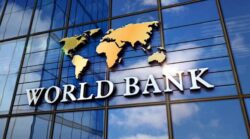Yields on Ghana’s Eurobonds have risen to their highest level in 10 years, as international investors continue to dump the country’s bonds amid fiscal and debt challenges – and now the Russian-Ukrainian war.
Data from the CBonds indicate that the country’s sovereign US$ yield to maturity (YTM) index had risen to 15.78 percent at the end of Thursday, March 3, 2022 following a decline to 7.15 percent as of January 8, 2021 – post the peak period of the coronavirus pandemic. This represents an about 8 percentage point rise in yields on the country’s Eurobonds.
Analysts have attributed fiscal and debt challenges as the primary reason for the surge in Ghana’s Eurobond yields, as the market continues to price-in the delay in passing the E-levy and amended form of the benchmark discount policy. Further to this, the ongoing tensions between Russia and Ukraine have complicated the nation’s balance of payment (BoP) outlook.
Senior Economist with Databank, Courage Kingsley Martey, in an interview with B&FT explained the situation, saying: “The market had priced-in a complete reversal of the discount on the benchmark value used for import duties. However, the authorities are now implementing a small discount instead of completely abolishing the discount as indicated in the 2022 budget. This has further deepened concerns around our financing outlook for 2022”.
Until February 17, 2022, the index maintained between 12 and 14 percent, then started a steep ascent subsequent to the downgrading reports by rating agencies Fitch and Moody’s, amid the country’s deteriorating fiscal and debt sustainability.
The market has thus eroded the flicker of optimism that followed government’s engagement with investors during a non-deal roadshow at the end of January.
Across sub-Saharan Africa (SSA), Eurobond prices have taken a nosedive as the escalated tensions between Russia and Ukraine prompt investors to short their position for a flight to safety.
Yields on US Treasury benchmarks have also risen significantly in recent weeks, as the most anticipated first Fed rate hike in March 2022 approaches. This ultimately pushes up yields, since US Treasury yields are used as benchmarks for our Eurobonds.
“Ghana’s outlook isn’t looking too good. Too many indicators are pointing toward economic stress. Exchange rate volatility, high inflation, as well as fiscal risks all contribute to the gloomy outlook,” Edem Nick Kporku, Senior Analyst with Apakan Securities Ltd., said in an interview with B&FT.
“It appears the investors, particularly offshore investors, have also lost confidence in the economy; and with the US Fed rate hike imminent, I am not surprised that yields have maintained their upward path through the second half of 2021 and into 2022 so far.
The general lack of confidence in the economy is driving offshore investors to reduce their Ghana cedi asset exposures. The sell-off will lead to an oversupplied bond market, and hence an increase in yield levels,” he added.
Also commenting on the issue, Senior Investment Analyst at OctaneDC Limited, Kwadwo Acheampong, said the development will further push banks to invest more in government securities than lend to the private sector.
“I believe banks are going to drift toward investing more in government securities to the detriment of lending to businesses. If lenders like EXIM and the envisaged Development Bank can fill in, that would help the private sector – but I am not sure that would be enough.
“I wonder if the BoG can set a limit as to how much a bank can invest in government securities compared to businesses; and how that would help businesses or impact on banks.”
As reported earlier by the B&FT, data contained in the Bank of Ghana’s Monetary Policy Report for January 2022 revealed an increase in the share of Treasury instruments as a fraction of banks’ total assets to 46.2 percent from 43.1 percent in 2020.










